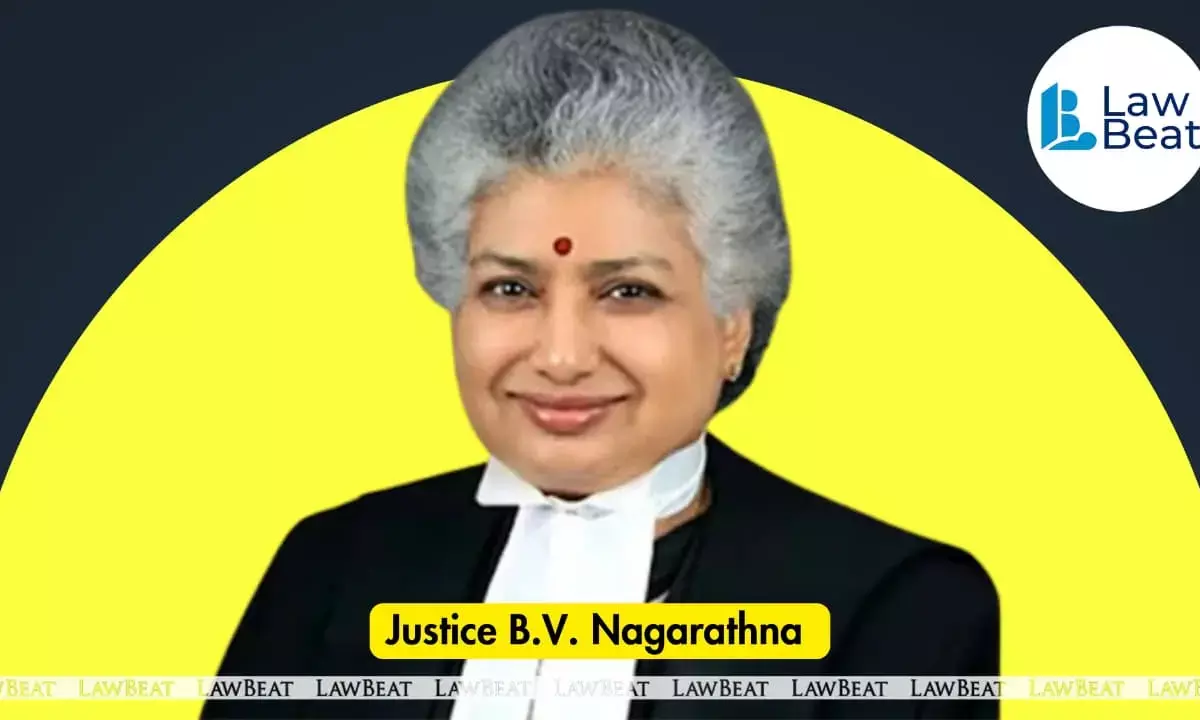Justice B.V. Nagarathna Calls for ‘Right to Be Born and to Thrive’ for Every Girl Child

“The first barrier that a girl child in India faces is being born at all,” Justice Nagarathna said
At the inaugural session of the Tenth National Annual Stakeholders’ Consultation on “Safeguarding the Girl Child: Towards a Safer and More Enabling Environment for Her in India” held on Saturday, Supreme Court Judge and Chairperson of the Juvenile Justice Committee, Justice B.V. Nagarathna, called for a renewed national commitment to ensure that every girl child in India “not merely survives but actively thrives.”
Delivering her opening remarks at the consultation, inaugurated by Chief Justice of India Justice B.R. Gavai and attended by Union Minister for Women and Child Development Annapurna Devi, Justice Nagarathna underscored that true equality for girls can only be achieved when their access to nutrition, education, safety, and opportunity is equal to that of boys.
“The first barrier that a girl child in India faces is being born at all,” she said, noting that the child sex ratio has improved only marginally from 914 girls per 1,000 boys (2011 Census) to 929 girls per 1,000 boys (NFHS-5). Citing recent reports of female foeticide and worsening sex ratios in certain States, she stressed the urgent need for “holistic interventions tailored to regional peculiarities.”
Addressing key concerns such as malnutrition, child marriage, access to education, and gender-based violence, Justice Nagarathna highlighted that 59% of adolescent girls aged 15–19 were found to be anemic according to NFHS-5 data. “Without adequate nourishment, all other measures undertaken to uplift the girl child may be at naught,” she warned.
She also commended the steady decline in child marriages in India; from 47% in 2005–06 to 23% in 2019–21—and credited both policy interventions and community engagement for this progress. However, she expressed concern over high dropout rates among girls after secondary education, calling for “education free of stereotypes and ideology.”
Speaking about the rising forms of digital and sexual violence against girls, she urged the expansion of trauma-informed judicial and police procedures to prevent re-traumatisation of victims. On trafficking, she noted that between 2018 and 2022, over 10,000 cases were recorded but conviction rates stood below 5%, emphasizing the need for timely victim compensation.
Justice Nagarathna also acknowledged the progress made in the last decade through initiatives like Mission Vatsalya, Mission Shakti, Beti Bachao Beti Padhao, and the establishment of POCSO courts and Child Welfare Committees nationwide.
Concluding her address, she said, “This consultation is more than a meeting, it is a platform for commitment. Every act of prevention, every system of protection, every service that responds to a child in need breaks a cycle of harm and creates a pathway for girls to thrive.”
Speaking at the same event, Justice JB Pardiwala described it as an “honour and privilege” to be part of a gathering united by a shared purpose, ensuring that every girl in India “has the right to live, learn and grow with equality, free from harm, discrimination and violence such as female foeticide and child marriage.” Justice Pardiwala underlined that protecting the girl child is not limited to preventing abuse or exploitation, but also includes guaranteeing her equal access to education, healthcare and social opportunities. He said, “It involves promoting her value in families and society and empowering her to make informed choices and reach her full potential as a respected individual and contributing member of the community.”
During the ceremony, Justice Pardiwala introduced the Handbook on Child Rights and the Law, prepared by the Supreme Court’s Centre for Research and Planning under the guidance of the Juvenile Justice Committee. The comprehensive publication, he noted, is designed as a practical and educational resource for judges, child welfare authorities, administrators, and policy stakeholders involved in child protection.
